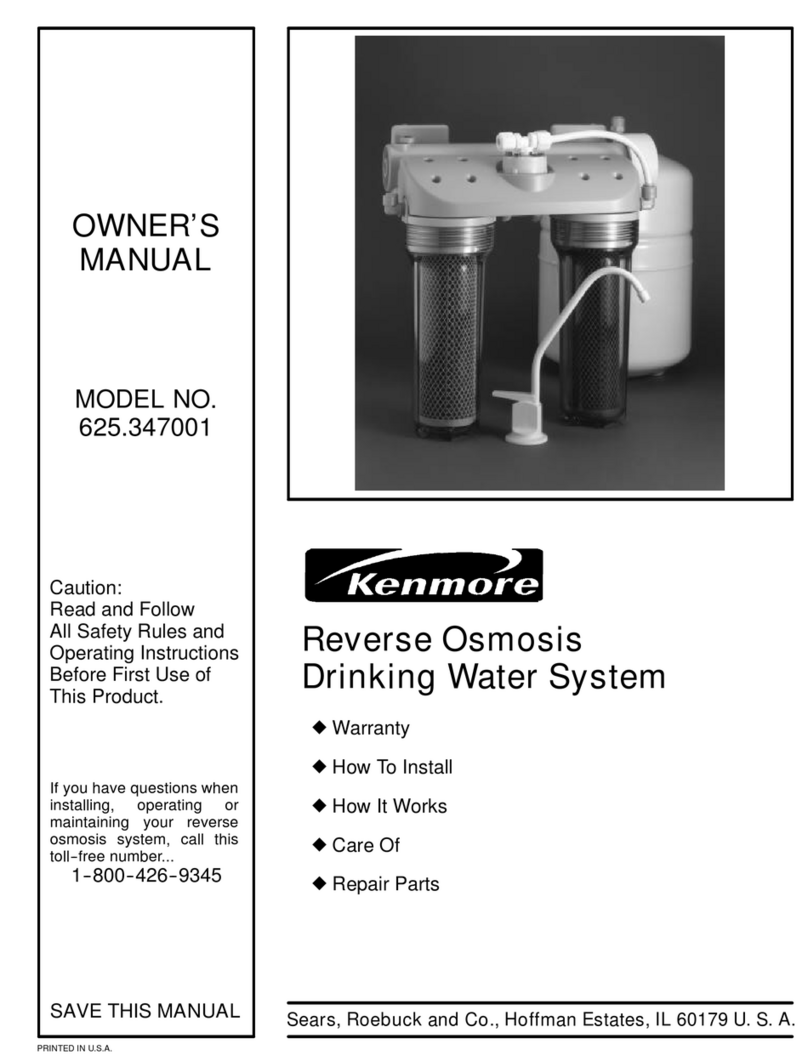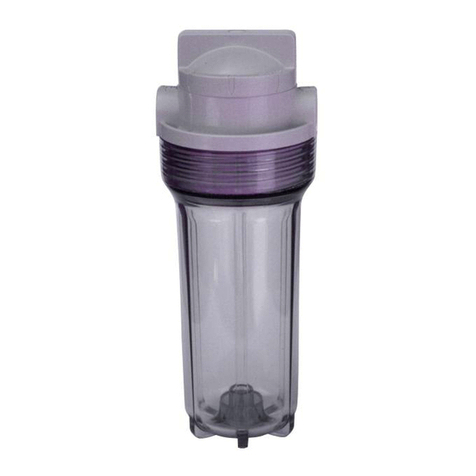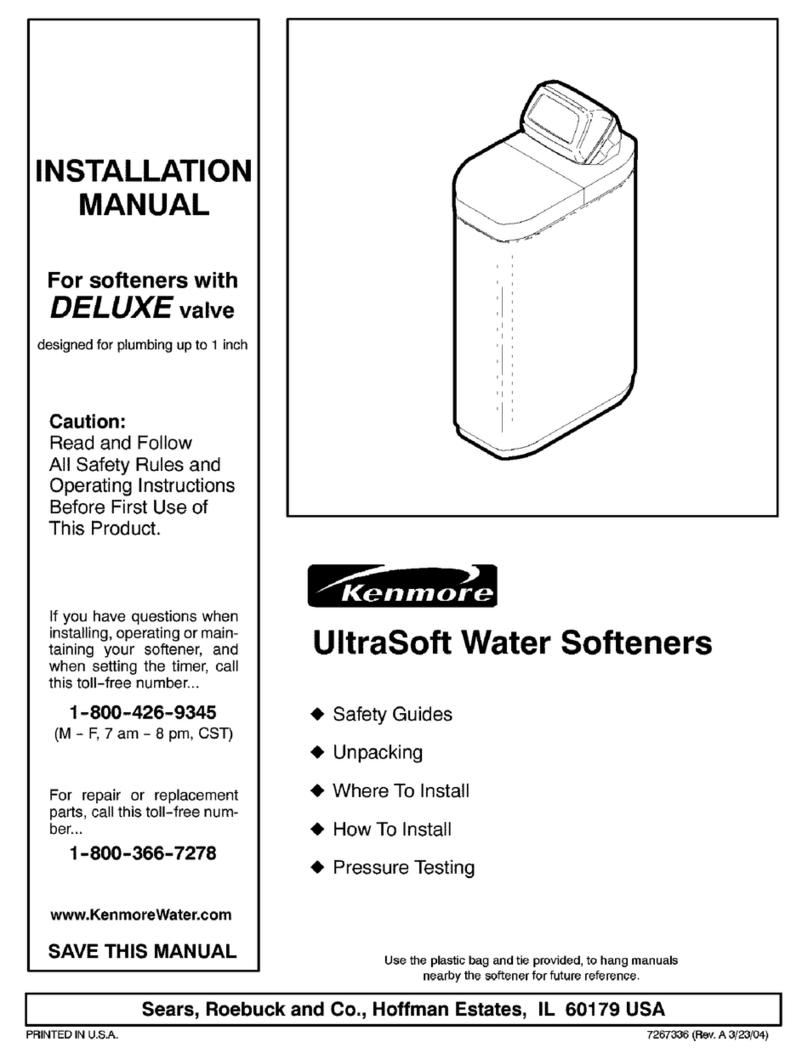Kenmore 153.331020 User manual
Other Kenmore Water System manuals
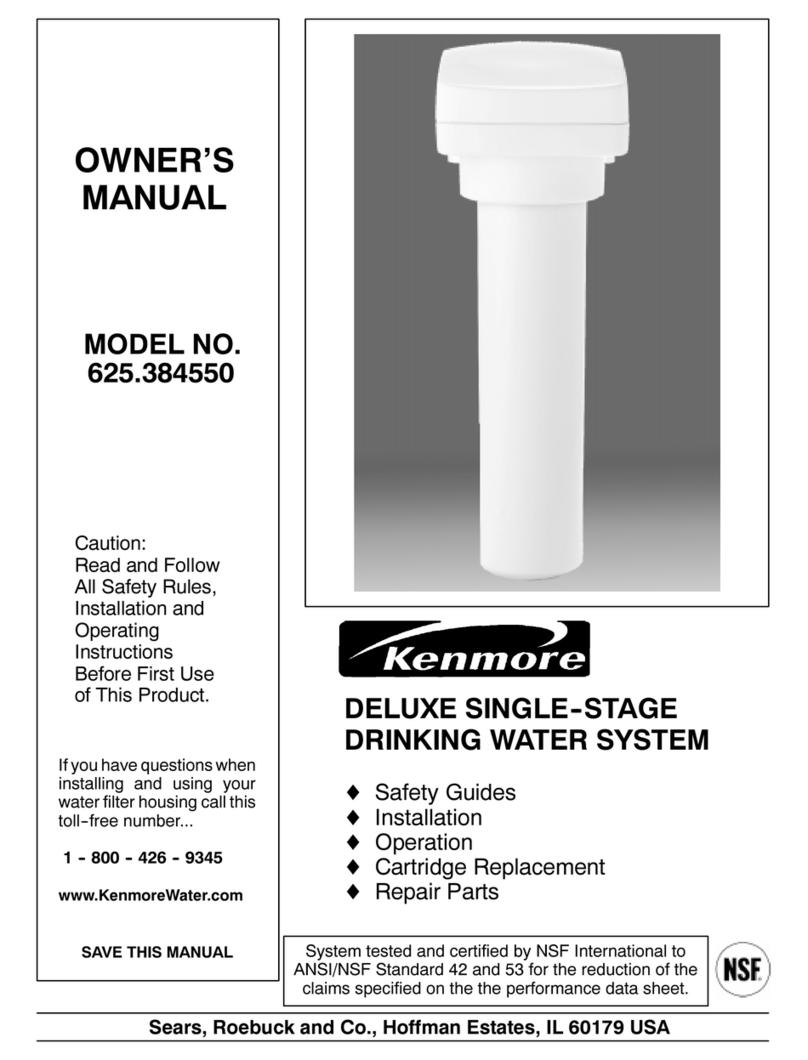
Kenmore
Kenmore 625.384550 User manual
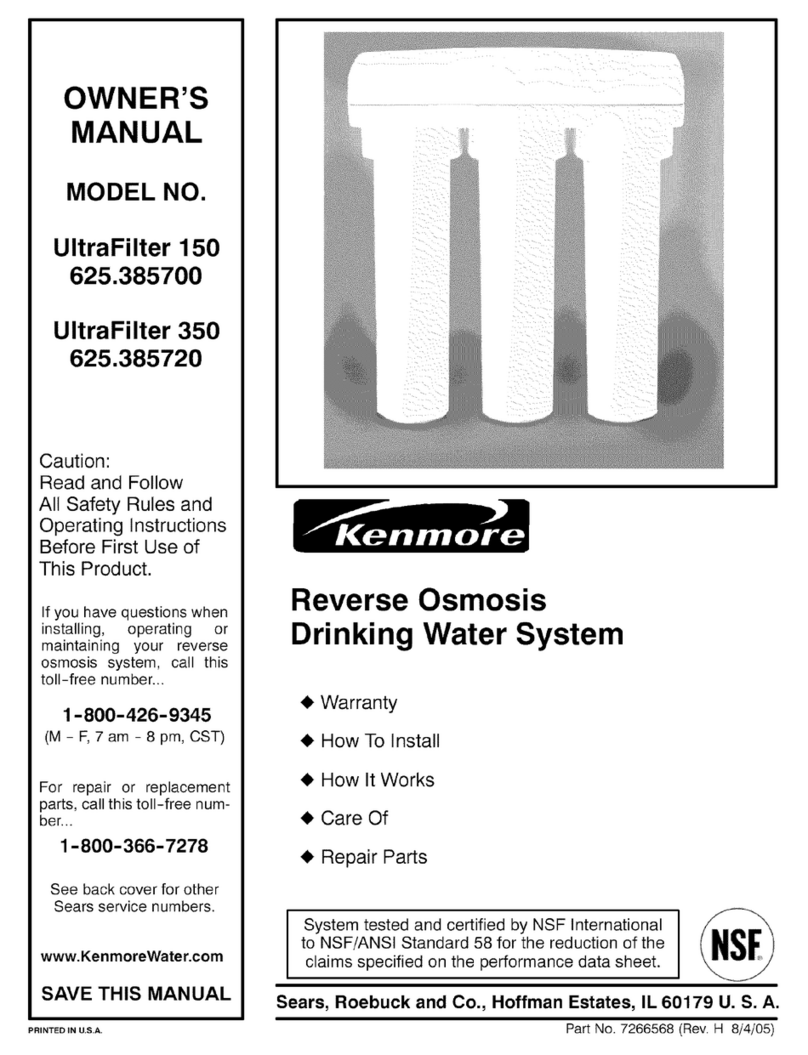
Kenmore
Kenmore ULTRAFILTER 150 625.385700 User manual
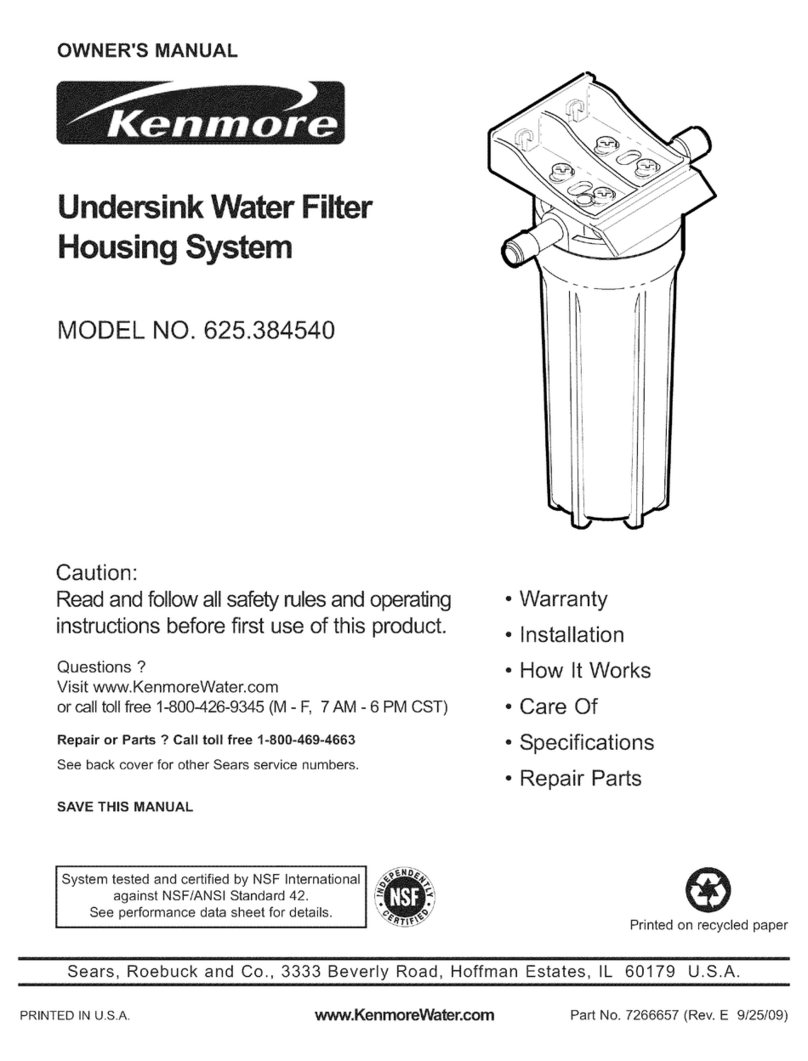
Kenmore
Kenmore 625.384540 User manual
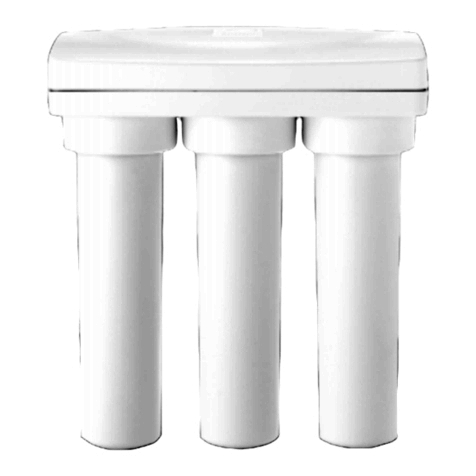
Kenmore
Kenmore 625.384720 User manual
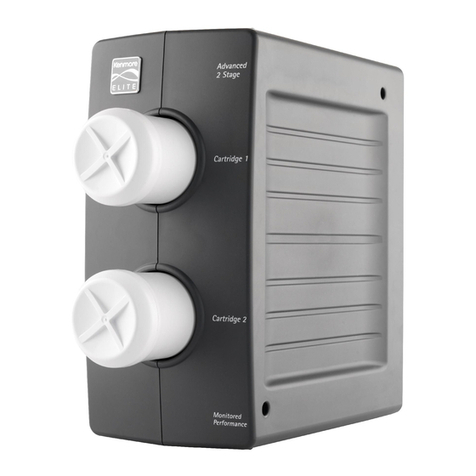
Kenmore
Kenmore 625.385010 User manual
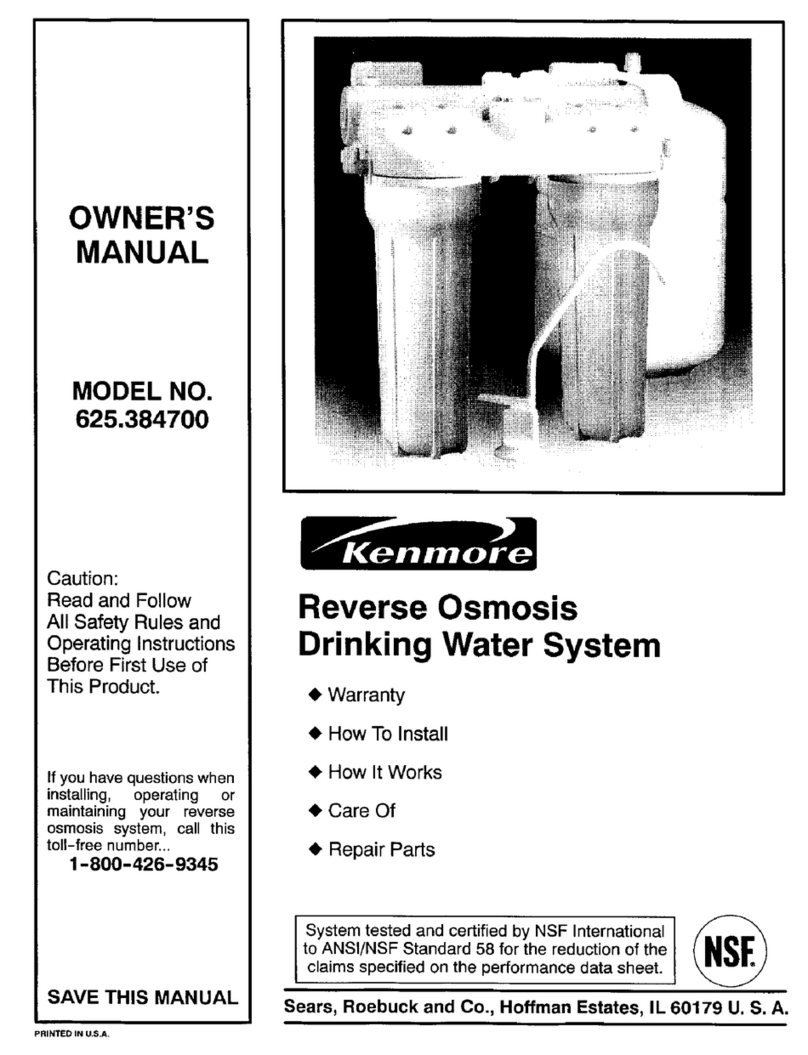
Kenmore
Kenmore 625.3847 User manual

Kenmore
Kenmore ULTRAFILTER 300 625.384720 User manual
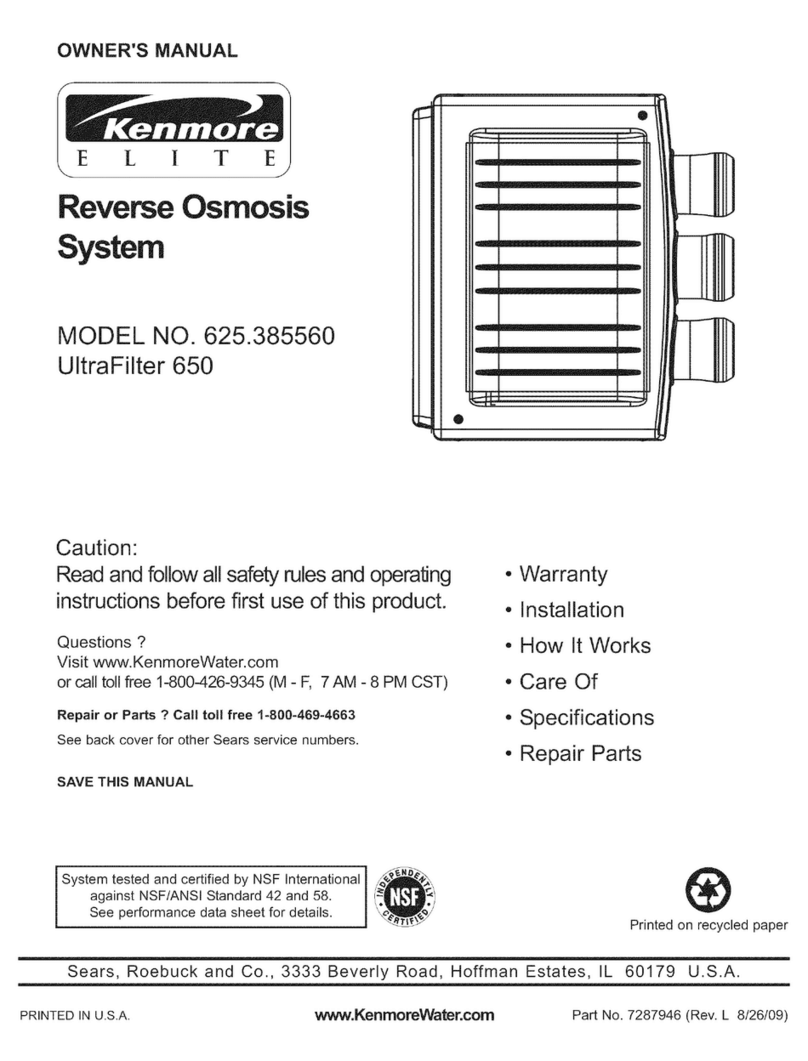
Kenmore
Kenmore Elite ULTRAFILTER 650 625.38556 User manual
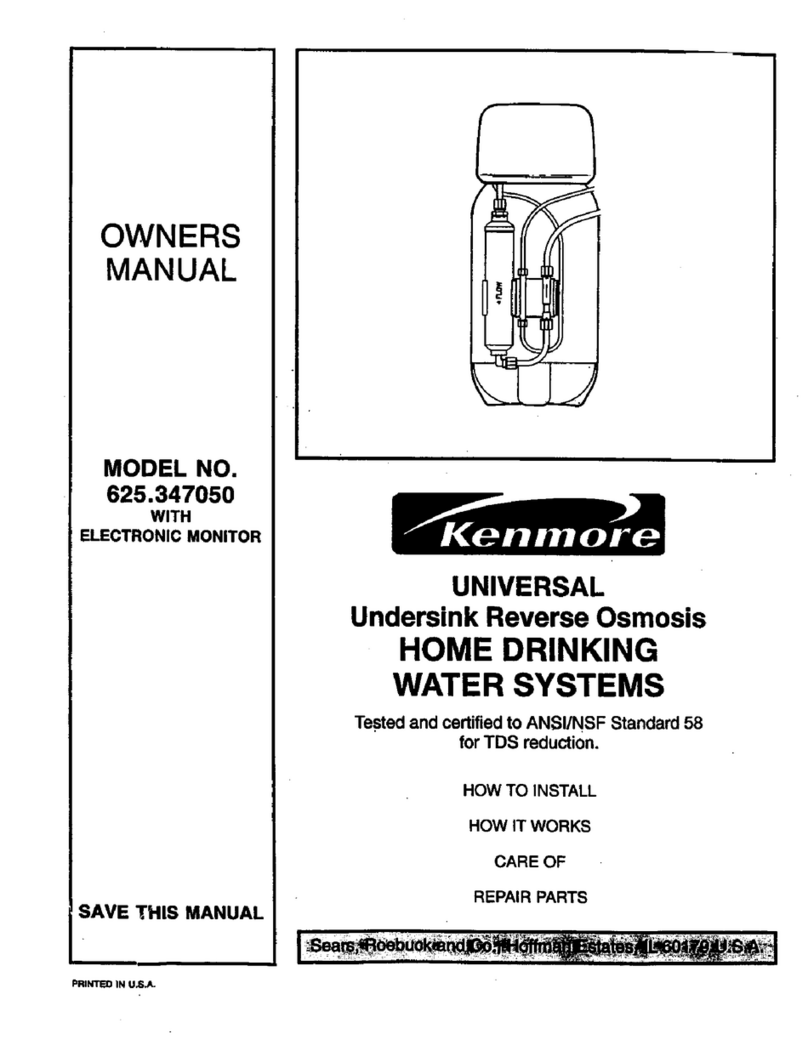
Kenmore
Kenmore 625.347050 User manual

Kenmore
Kenmore 625.385010 User manual
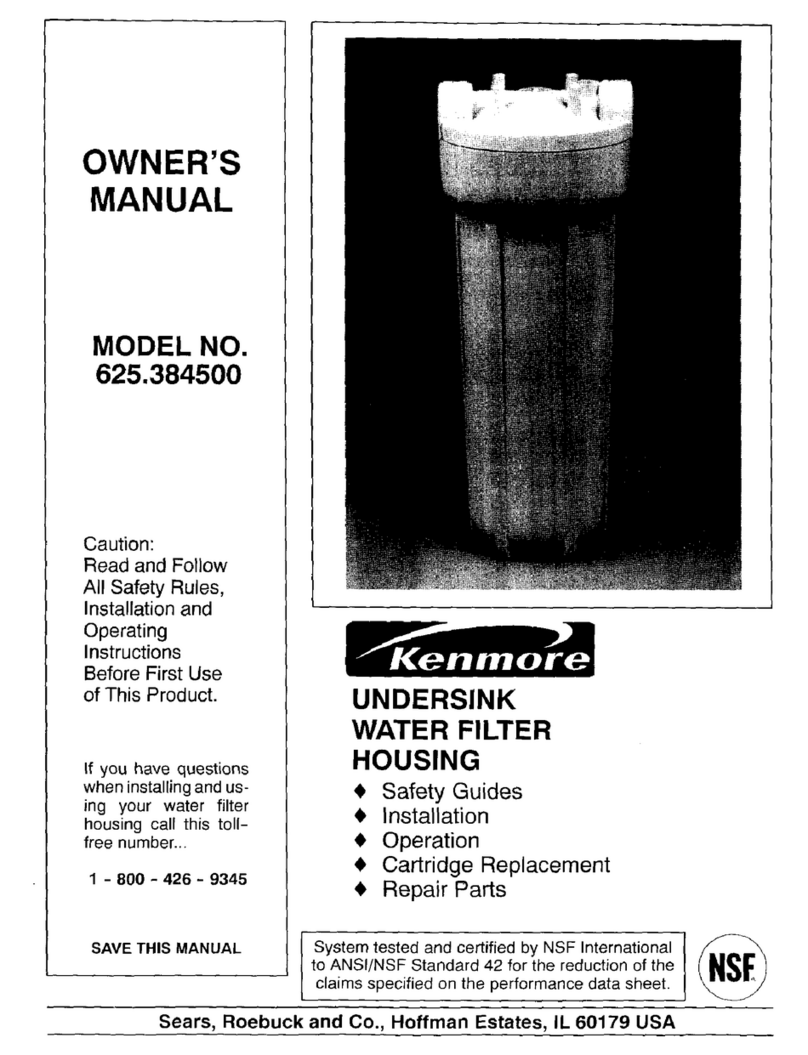
Kenmore
Kenmore 625.3845 User manual
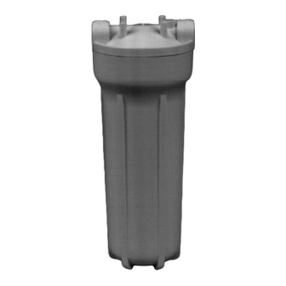
Kenmore
Kenmore 625.384500 User manual
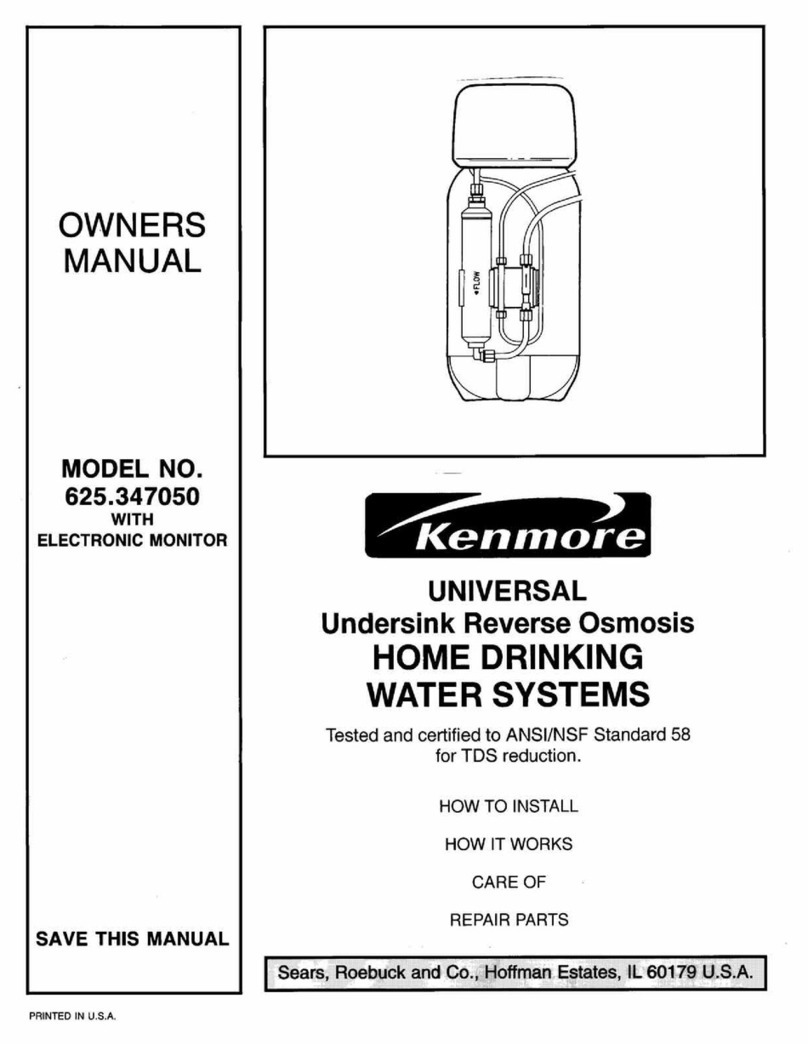
Kenmore
Kenmore 625.347050 User manual
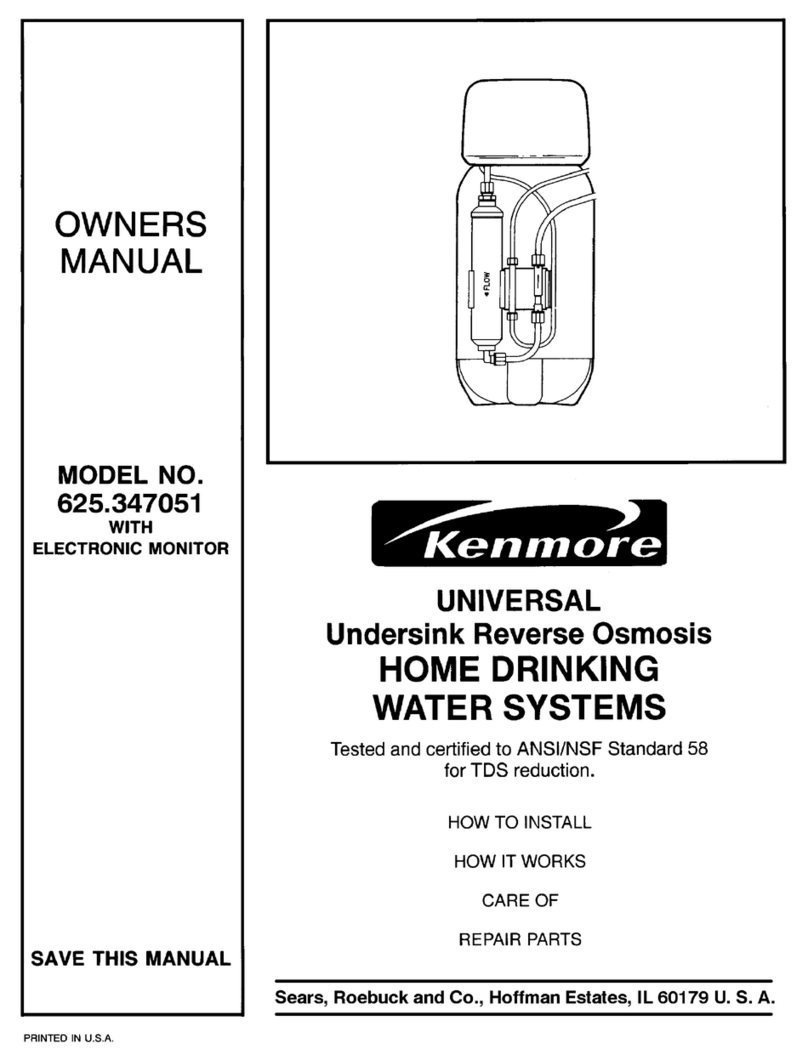
Kenmore
Kenmore 625.347051 User manual

Kenmore
Kenmore 625.347031 User manual
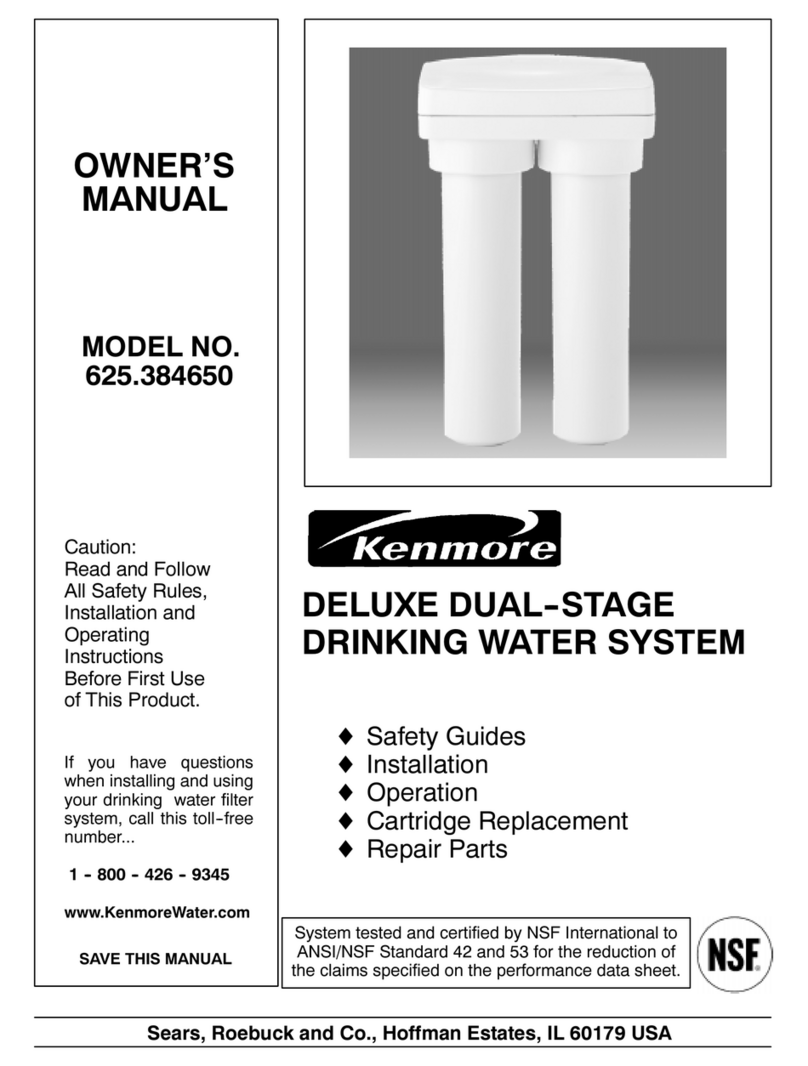
Kenmore
Kenmore 625.384650 User manual
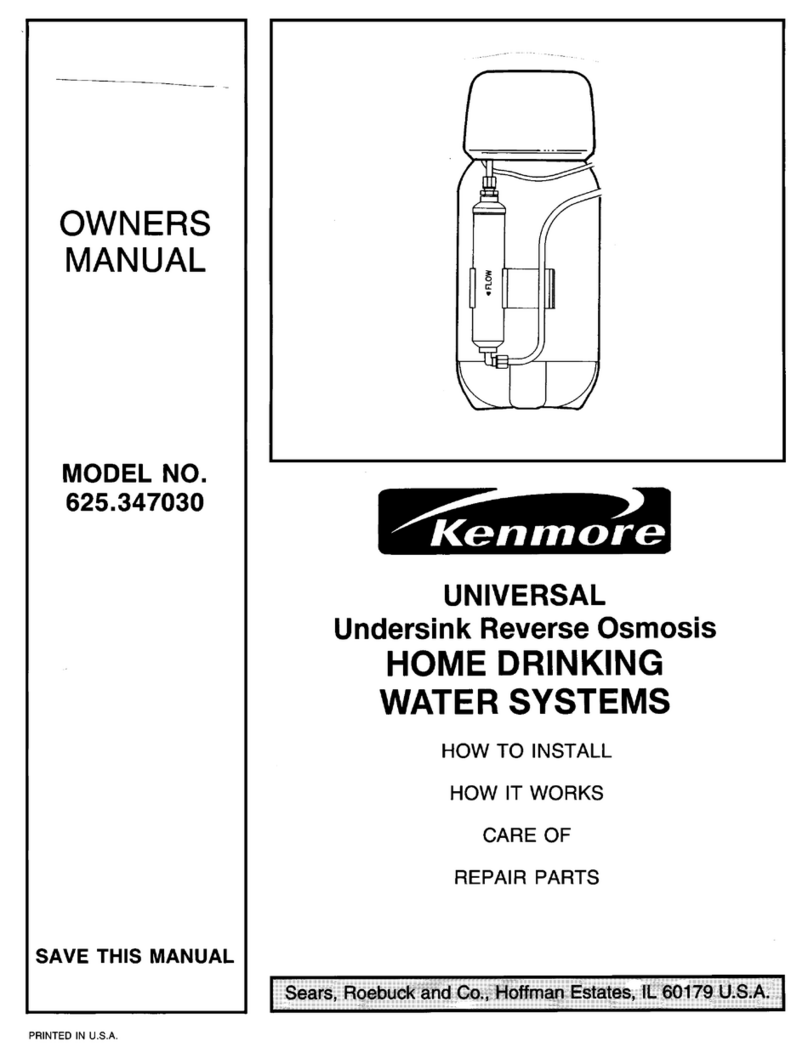
Kenmore
Kenmore 625.347030 User manual

Kenmore
Kenmore 625.347051 User manual

Kenmore
Kenmore 625.385560 UltraFilter 650 User manual
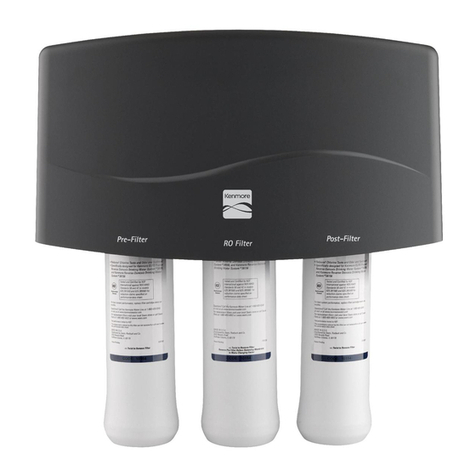
Kenmore
Kenmore 625.381560 User manual
Popular Water System manuals by other brands

Accu-Tab
Accu-Tab PowerBase 3070AT Installation and operating instructions

Energy Plus
Energy Plus VTS30HP Manual of installation and use

Spirotech
Spirotech SPIROVENT SUPERIOR S250 user manual

Culligan
Culligan Aqua-Cleer Aqua-Cleer Advanced Drinking Water... owner's guide

A.O. Smith
A.O. Smith Dura-Max AJH - 1000A - P instruction manual

Microline
Microline T.F.C.-4 Installation, operation & service manual

Eureka Forbes
Eureka Forbes Aquaguard Select user manual

Cetetherm
Cetetherm AquaEfficiency Quick installation guide

CB Tech
CB Tech CB-VOC installation guide

Vaillant
Vaillant auroFLOW plus VPM 15 D Installation and maintenance instructions

resideo
resideo Braukmann HS10S installation instructions

Gude
Gude INOX 100/24 manual

Mono
Mono Eco 1-60 Installation, operation and maintenance instructions

SpectraPure
SpectraPure Drinking Water Kit instructions

HydroCare
HydroCare Dual Action Installation, use & care guide

Alpha
Alpha SolarSmart 150 Installation and servicing instructions

TA
TA FRISTAR3 operating manual

GÜDE
GÜDE HWA 800 K manual
